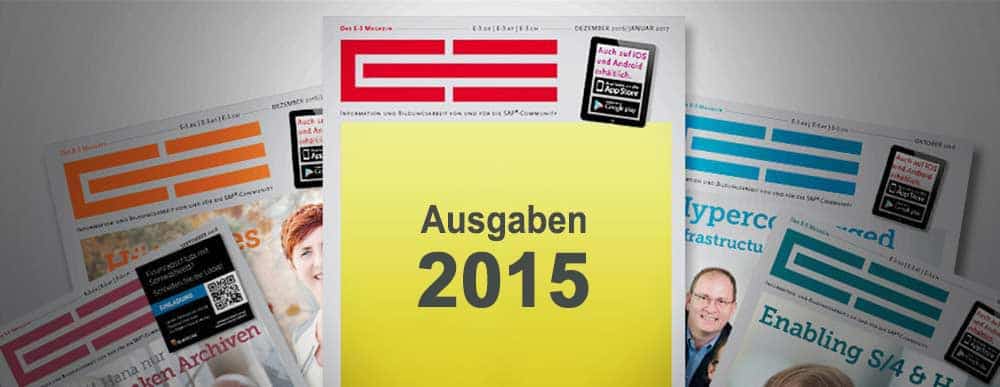Cross-channel in the pet food trade


In the pet supplies trade, it pays off to further expand your own e-commerce offering. This is confirmed by sales figures: A study by the e-commerce association BEVH assumes that around 47 billion euros will be spent on online goods orders in 2015.
In 2014, online orders for pet food and accessories generated sales of around 730 million euros. Ordering everything from the comfort of your own home is therefore no longer a vision of the future, but necessary to maintain and further expand your market position.
In order to benefit from developments in the market and in the e-commerce sector, Fressnapf needed a new overall strategic direction.
"The decisive factor for the switch to a completely new process and IT landscape was that the company has become a large medium-sized player"
says Roland Vorderwülbecke, Head of Information Technology at Fressnapf.
Customers should also be provided with a comprehensive omnichannel offering. A study has shown that 65% of retailers have problems with the optimal implementation of omnichannel systems.
The reasons for this are inadequate technological requirements, fundamental changes to the IT landscape and an overly complex company infrastructure. The project requirements were therefore high.
Head monopolies and lack of scalability
Although the company was able to continue working with the old solutions in its operational business, the processes were slow and time-consuming. In addition, only a few employees had the necessary know-how about the previous system and process landscape.
"There were too many 'head monopolies', i.e. employees who were the only ones who knew how the system landscape worked in detail"
explains Vorderwülbecke.
Such a situation without standardized processes jeopardizes continuous IT operations and thus also Fressnapf's ability to act if, for example, one of these employees leaves the company.
"With an annual turnover of 1.4 billion euros, standardized processes are a necessary prerequisite"
says Vorderwülbecke.
Another problem was that scalability was no longer a given. This made it difficult for the company to grow, especially at an international level.
Speed of implementation
"The speed of project implementation was very important to us. We needed a solution quickly so that we could also quickly tackle the issue of e-commerce and the implementation of end-to-end omnichannel processes"
explains Vorderwülbecke.
Fressnapf chose KPS Consulting as its project partner. With the rapid transformation method, employees and departments are involved in the project and process development at a very early stage and many activities are carried out in parallel, which leads to quick results.
"We had a very large team here: at peak times, up to 90 consultants were working on site at the same time to implement the project at the required speed"
Vorderwülbecke recalls.
This turned an inhomogeneous and complex infrastructure into a system based on standardized processes.
A business intelligence solution based on Hana was also introduced as part of the project.
"The advantage of this is that all processes can be mapped in real time. This makes it easier to respond to customers' needs and plan ahead"
says Jochen Jahraus, Managing Partner at KPS Consulting.
In addition, the new SAP Store Management by GK checkout solution was implemented in around 800 German stores.
"We are now a reference customer for GK applications"
says Vorderwülbecke.
The new checkout system was implemented as a pilot in one store in spring 2013 and then successively in other stores in Germany.
Methodology
Initially, a solid IT infrastructure was created in 2011 with the switch to SAP for Retail. The KPS consultants used a process that was specially developed for the rapid and simultaneously high-quality implementation of transformation projects.
"The Rapid Transformation method has the advantage that it produces results very quickly"
Vorderwülbecke states.
In large-scale projects, defined project phases are usually run through step by step and on paper (waterfall model). Only then does the actual implementation begin.
Thanks to the prototype-based KPS methodology, Fressnapf employees were involved in process development and processing in the SAP system at a very early stage of the project.
This increased acceptance among the workforce enormously and at the same time minimized the project risk of an implementation that did not meet the requirements.
The merchandise management system was put into operation in mid-2012 and then the entire range of over 11,000 items was gradually integrated. The international rollout was a challenge, as each country had previously used its own solutions: SAP was implemented in ten countries and business units within a year.
The webshop was then converted to the new Hybris solution. The first new web store went live in Luxembourg at the beginning of October 2014, followed by the German market with its new e-commerce presence at the end of November.
Networking via an omnichannel approach
Another major goal for Fressnapf was the development of omnichannel retail. Within a year, the existing front end was optimized on the basis of the new SAP system.
The company relied on KPS subsidiary Getit as an experienced implementation partner for store systems: These include the Hybris e-commerce solution, which can be seamlessly integrated into SAP for Retail.
Connecting the associated back-end processes proved to be a much more complex task, with the transformation experts from KPS also reintroducing SAP finance and accounting as well as customer relationship management.
The integration of the fulfillment service provider into the SAP system also took place in this part of the project and was completed within a year.
Thanks to the close cooperation between front-end and back-end specialists, Fressnapf now benefits from an end-to-end and integrated omnichannel platform.
"We are still working on further expanding the purchasing options for customers via various sales channels"
says Jahraus.
New features such as Click & Ship (goods ordered online are delivered directly from the nearest store) will also be offered in future.
Vorderwülbecke:
"We want to become a real brand for the customer and we can only achieve this if we are good at what we do and know our customers' needs - across all channels."
More transparency with new SAP system
With the new solutions, Fressnapf has set up its IT landscape in a future-oriented way and can therefore react faster and more flexibly to market changes.
"To successfully complete a project of this scope at this speed is quite unique"
summarizes Vorderwülbecke.
"We have more transparency and can address customers in a more targeted way."
Fressnapf also wants to use the new website to increase campaign management and customer reactivation.
Once the omnichannel approach has been fully implemented, Vorderwülbecke sees many advantages for the consumer. For example, customers will be able to choose from many new payment options, process returns more easily in future and check availability in real time.
Fressnapf would also like to increase its efforts in the area of customer loyalty and integrate a payback option, for example.





